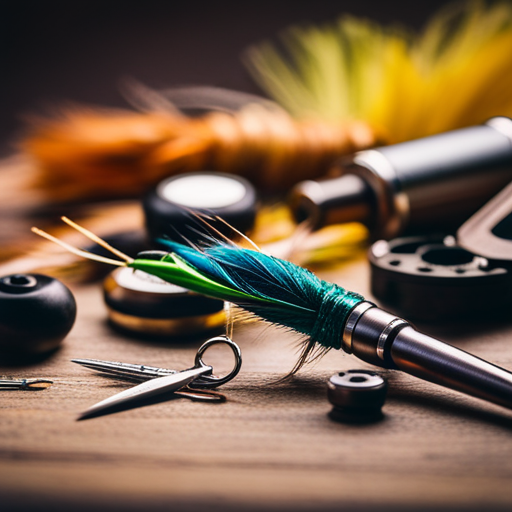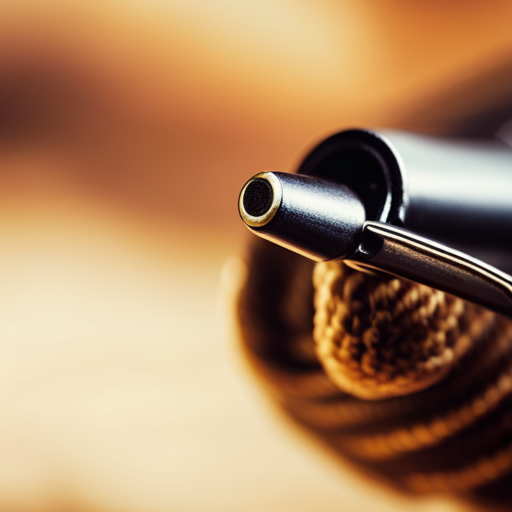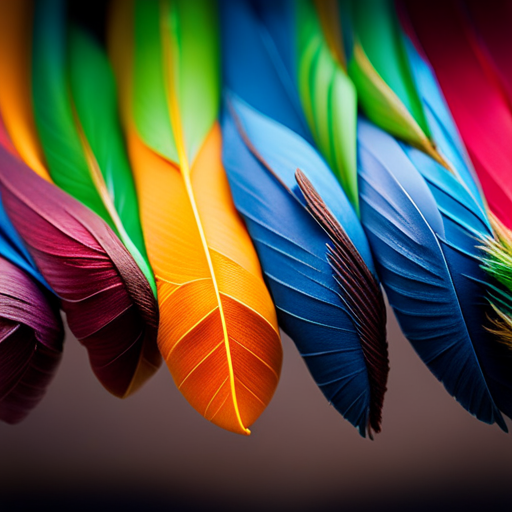Like a shimmering stream under the sun’s rays, fly tying flash materials add a touch of allure to fly patterns.
From classic to cutting-edge, understanding the properties and innovative applications of flash materials can elevate your fly tying game.
In this article, we delve into the world of flash materials, exploring their different types, characteristics, and tips for effective use.
Join us as we uncover the secrets to incorporating these captivating elements into your fly patterns.
Understanding Different Types of Flash Materials
Understanding the various types of flash materials commonly used in fly tying is essential for creating effective and visually appealing flies. When it comes to flash material textures, fly tyers have a plethora of options to choose from. Some common textures include flat tinsel, holographic tinsel, pearl braid, and crystal flash. Each texture reflects light differently, giving the fly a unique shimmer and shine.
By incorporating different textures, fly tyers can create flies that imitate the natural flash of baitfish or insects, ultimately making them more enticing to fish.
Color combinations play a crucial role in the effectiveness of fly patterns. Different species of fish are attracted to different colors, and understanding how to combine flash materials in various hues can greatly enhance the fly’s appeal. For instance, using a combination of silver and blue flash materials can mimic the appearance of a wounded baitfish, making it irresistible to predatory fish.
Experimenting with color combinations allows fly tyers to create patterns that are tailored to specific fishing conditions and target species, increasing the likelihood of a successful catch.
Properties and Characteristics of Flash Materials
When considering the properties and characteristics of flash materials for fly tying, it is crucial to examine how different textures and color combinations can impact the visual appeal and effectiveness of the flies.
Light reflection is a key property to consider when selecting flash materials. Different materials have varying abilities to reflect light, creating an attractive shimmer that can mimic the appearance of natural prey and attract fish.
Additionally, durability and flexibility are essential characteristics of flash materials. Durability ensures that the flash materials can withstand the rigors of casting and the teeth of fish, while flexibility allows for natural movement in the water, enhancing the lifelike appearance of the fly.
Moreover, the ability to maintain their shape and luster after multiple uses is vital for fly patterns.
Understanding the properties and characteristics of flash materials enables fly tyers to create flies that not only look visually appealing but also effectively attract fish, making the selection of these materials a critical aspect of fly tying.
Incorporating Flash Materials Into Fly Patterns
The incorporation of flash materials into fly patterns requires a keen understanding of their properties and characteristics, ensuring their effective utilization in creating visually appealing and fish-attracting flies. Creative patterns and unique designs can be achieved by strategically integrating flash materials into fly tying. Below is a table showcasing some common flash materials and their unique characteristics:
| Flash Material | Properties | Best Use |
|---|---|---|
| Tinsel | Reflective, flashy | Adding a flash to the body of the fly |
| Flashabou | Thin, highly reflective | Creating sparkling and vibrant wing patterns |
| Krystal Flash | Long, translucent fibers | Enhancing the tails and bodies of streamers |
Incorporating these materials offers fly tyers the opportunity to experiment with different textures, colors, and shine, ultimately leading to the development of innovative and effective fly patterns. By thoughtfully integrating flash materials, fly tyers can create flies that not only attract fish but also showcase their creativity and craftsmanship.
Tips for Using Flash Materials Effectively
Adroitly incorporating flash materials into fly patterns can significantly enhance their visual appeal and effectiveness, often drawing fish to the fly with increased frequency. When using flash materials, it’s essential to employ creative techniques to maximize their impact.
One practical application is to use sparse amounts of flash to add subtle glimmers, mimicking the natural reflection of fish scales. This can be particularly effective in clear water conditions where a little sparkle can make the difference in enticing a cautious fish.
Another creative technique is to blend flash materials with natural fibers to create a more lifelike appearance, combining the flash’s attraction with the realistic movement of traditional materials. Additionally, strategically placing flash materials in specific areas of the fly pattern, such as the tail or wing, can create a more realistic baitfish profile, making the fly more appealing to predatory fish.
Understanding these creative techniques and practical applications can significantly improve the effectiveness of fly patterns and increase the angler’s success rate.
Transitioning into the subsequent section, let’s now explore innovative applications of flash materials.
Exploring Innovative Applications of Flash Materials
Continuing the exploration of fly tying flash materials, we will now delve into innovative applications that further enhance the visual allure and effectiveness of fly patterns.
When it comes to incorporating flash materials into fly patterns, there are numerous innovative techniques that can be employed to create visually captivating and effective designs. One such technique involves blending different types of flash materials to create a multi-dimensional and shimmering effect that mimics the natural iridescence of insect wings or fish scales. This creative approach not only adds a realistic touch to the fly pattern but also increases its visibility and attractiveness to fish.
Another innovative application is the use of flash materials to create segmented bodies or hot spots on fly patterns. By strategically placing flash materials along the body or at specific points on the fly, anglers can effectively mimic the flash and movement of prey, enticing more strikes from fish. Additionally, incorporating flash materials into the wings or tails of fly patterns can create enticing and realistic movement in the water, making the fly more irresistible to fish.
These creative designs and innovative techniques not only elevate the visual appeal of fly patterns but also enhance their effectiveness in attracting fish.
Frequently Asked Questions
Can Flash Materials Be Used in Saltwater Fly Patterns?
Yes, flash materials can be effectively used in saltwater fly patterns. When incorporated into fly tying techniques, these materials add shimmer and attract fish. However, it’s crucial to ensure durability to withstand the harsh saltwater environment.
Are There Any Eco-Friendly Alternatives to Traditional Flash Materials?
Just as the river flows, eco-friendly alternatives for flash materials are emerging. Sustainable options like biodegradable tinsel and natural fibers offer fly tyers the chance to minimize their impact on the environment.
What Are the Best Ways to Store and Organize a Variety of Flash Materials?
Storing options and organization tips for a variety of flash materials include using clear containers for visibility, labeling and categorizing by color or type, and utilizing storage systems like tackle boxes or hanging organizers for easy access.
Can Flash Materials Be Used to Create Realistic Looking Insect Imitations?
Yes, flash materials can be utilized to create lifelike flies by adding realistic shimmer and sparkle to imitate insect features. Additionally, incorporating flash material alternatives allows for customized and innovative fly tying techniques.
Are There Any Potential Downsides to Using Flash Materials in Fly Tying?
Potential drawbacks of using flash materials in fly tying include overuse, which can affect the fly’s natural appearance. Additionally, environmental impact is a concern. Anglers may consider alternative options, such as using natural materials, to mitigate these issues.
Conclusion
In conclusion, the world of fly tying flash materials offers a diverse range of options for creating dynamic and eye-catching fly patterns.
By understanding the properties and characteristics of different types of flash materials, fly tyers can incorporate them effectively into their patterns.
With a little creativity and innovation, the possibilities for using flash materials in fly tying are endless, allowing tyers to explore new and exciting ways to enhance their creations and catch the attention of fish.




